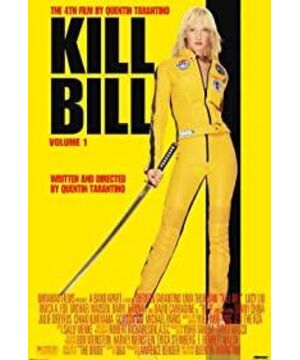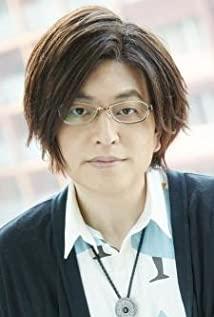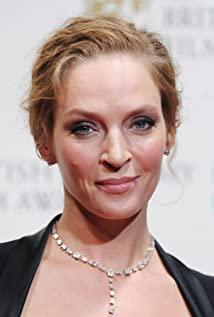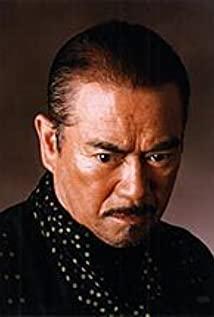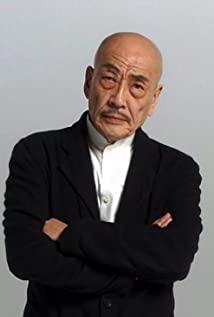introduction:
Quentin Tarantino can be said to be one of the directors with the most style and personal characteristics in the film industry today. When discussing his creative techniques and aesthetic style, there is nothing more than the element of "violent aesthetics" in his films. And in the horizontal comparison of "Kill Bill" with other Quentin movies, (such as "Falling Water Dog", "Pulp Fiction", including "Born Murderer" in which Quentin was only involved in the screenwriting, etc., this movie is very special. The main body of the image that is violent in the film is almost all concentrated on the screen image of the female killer.
Therefore, the interpretation of this film can be recontextualized, in addition to the keywords commonly used in publications such as "postmodern", "black humor", "joking", "irony", and "absurdity". Bringing into the gender perspective from aesthetic issues. Therefore, Quentin's "Kill Bill" provides a concentrated and rich textual soil for the construction of the screen to investigate the image of the female killer. Here we can clearly see how the film term "violence aesthetics" objectifies female images, and at the same time uses lens scheduling and image mechanisms to stare at and consume the materialized female body.
"Kill Bill" essentially reveals a primitive desire to satisfy visual pleasure. The movie style of "violent aesthetics" is its most direct product, which further forms the ultimate fetish. The so-called "fetish" here refers to the objectification, gaze, obsession, and consumption of the female body. The film uses the "violent aesthetics" style of lens scheduling to entice the audience to metaphorically occupy the pornographically encoded image of a female killer in a fetish way.
text:
The narrative theme of the movie "Kill Bill" is extremely simple. A bride originally codenamed "Black Mamba" in the killer organization was assassinated by the organization at her wedding. She woke up four years later and began investigating and seeking revenge all the way. She also received extremely strict martial arts training, wielding two samurai swords to kill the female assassins who participated in the wedding assassination one by one, and at the same time, she was closer to the man named "Bill" behind the scenes of this revenge incident.
The narrative of the entire revenge story is actually flawed. A main line around revenge was dismembered by Quentin with various stylized shots, mixed with animated storytelling, black and white slow motion, classic alarm sounds and flashbacks, etc. The series can be called fancy editing techniques to stylize the movie to the greatest extent. It can be said that in "Kill Bill", the film narrative is placed in a less important position, and the "violent aesthetics" above the style dominates with the help of form.
This also caused the protagonist of the film, the arc of the characters behind the theme of revenge, and the logical motives to become very weak at the level of film narratives. The whole movie is like in a video game. The only important narrative is to let the female killer "bride" continue to upgrade and fight monsters, meet more and stronger female killers, and undertake one after another gorgeous violent scenes to satisfy the visual Effect and excite the audience. Fighting and revenge all the way, at the end of the film, I found the clue of the game’s ultimate Boss "Bill". In addition, we can hardly find any narrative embellishments in the film.
It can be said that the "violent aesthetics" of the female body constructed by the close-up is the entire content of the film; and the many female killers with different styles in the film are the direct recipients of watching. They are the constrictors of the gaze. All eyes start from the camera of the director of the set to the audience outside the cinema screen. All watching is finally focused on the female killer in the film.
There is also a set of shots to illustrate that the screen image of the female killer in the film is essentially just a pile of fetish symbols. For example, Bruce Lee's tights for the "Black Mamba" bride, the white nurse uniforms of the one-eyed killer in the organization, Yan Ishii's Japanese kimono full of Dongying imagination, and the Japanese female high school uniforms of the Meteor Girl - these martial arts uniforms, nurse uniforms, The choice of kimono and school uniform is not just for aesthetic considerations. The female killers are all arranged to dress, to withstand the viewing, and to meet and point to male desires.
Take the kimono in the movie as an example. In the movie, in addition to the Japanese gang leader Ishii Yan, played by Liu Yuling, wearing a kimono, Quentin also arranged for the heroine "bride" to wear a pure white kimono and receive a katana. In Tanizaki Junichiro's "A Praise to the Shadows", it is emphasized that the beauty of the Eastern style comes from the shadows under a certain shade. In the aesthetic context of Japanese kimonos, the female body is constantly covered by the layered, gorgeous and complicated kimono styles, and the elegance and nobility of the female body is emphasized by blocking the gaze. A kind of restrained and restrained beauty, through appropriate repression to maximize the imagination, it is because of the "forbidden sex" that it appears "erotic".
In the end, the beauty is peeled off, and when we finally see the appearance of the female body, the taste in this process is the beauty from "forbidden" to "color". The senses are free from depression and lament the ultimate presence of beauty. The film focuses on scenes of female killers wearing Japanese kimonos, which is a kind of sensory mobilization of depression and taboo. The final exposure of the kimono in the movie is to achieve a collaborative climax of violence and fetishism by cutting off the top of Yan Ishii's skull.
And the female assassin in the movie is dressed in tight-fitting martial arts uniforms, nurse uniforms, high school uniforms and other arrangements, which are also very interesting. All this is not that the clothing symbol itself has erotic meaning, but the fetishistic obsession, which shapes the beauty of the subject's body and transforms it into something that can be satisfied by itself. The decisive male gaze projects its fantasy onto the female form stylized in this way. Women are watched and displayed at the same time, and their appearance and clothing are coded for strong visual and erotic impact, so that they can be said to have the connotation of being viewed.
Quentin's "violent aesthetics" was filled with bone-stitched male gazes from the beginning, with broken limbs flying around like a balloon, and scarlet blood splashing everywhere like a high-pressure water gun. All kinds of forward, reverse, and close-up shots are all focused on the female assassin's body, just like tight intercourse. It seems that through this image generation mechanism, their only sexual satisfaction can only come from watching a materialized "she". And this kind of viewing path that pursues visual pleasure and sensory stimulation can only lead to the ultimate fetish of the screen image.
The female body is consumed, and the female killer is turned into a beautiful and sharp samurai sword. There is still no subject, but the object of desire. This is driven by the "sex" fetish viewing drive, which leads to the female killers on the screen. , Can only become a "knife". Because the knife is an object without subjectivity, it will always be an object in a subsidiary position. It cannot actively attack anyone, so it is absolutely safe. Then naturally it will not arouse male castration anxiety, so it can be viewed and stared pornographically.
Based on this logical chain, then the female killer on the screen must and can only be materialized into some kind of non-subjective object, in order to maximize the visual pleasure pursued by the audience. Then, the screen image of the female killer constructed under the category of "violent aesthetics", all her violence in the film exists only for visual pleasure, and the narrative of female violence under this theme can only be reduced to a surrender to the style of the image. , And the collusion of business mechanisms.
summary:
The "violent aesthetics" created by Quentin in "Kill Bill" is like morphine-synthesized artificial saccharin. With the help of the film industry to produce greasy sweet ice cream, the stomach is still empty after the wind is inhaled. Once the "consumption" of the screen image of the female killer is completed, the desires are clearly exchanged, and the female subject has long been corroded by saccharin. Then the subject of female violence is a commercial gimmick and has no real meaning.
Laura Mulvey argued in the article "The Pleasure of Watching Movies and Narrative Films": "Using the film as the control time dimension (editing, narrative) and the film as the control space dimension (distance change, editing) Tension, the encoding of movies creates a gaze, a world, and an object, thus creating an illusion of tailoring according to desire. It is necessary to break these movie encodings and their relationship with the external structure of the format in order to correct Mainstream movies and the pleasure it provides challenge."
This article focuses on the construction of the female killer image in the movie "Kill Bill" and the visual pleasure demand contained in the connotation of "violent aesthetics", and then further outlines the fetish complex within the viewing context. Through the scheduling and use of the lens, and the fascination with the female killer symbol in the film, the hidden erotic pleasure and fetish viewing within this film slowly emerge. But the audience is a transcendent subject after all, as Laura said, "Analyzing pleasure or beauty is essentially destroying it"-and this is precisely the intention of this article.
We expect to be able to deconstruct the fetish pleasure contained in the movie with the female killer as the subject of violence on the screen and "violent aesthetics" as the main visual style, and at the same time try to call for a kind of transcendence from the viewer. Under this transcendental vision, what we see will no longer be "sex" and "knife", but one after another vivid and concrete person, one after another truly subjective "she".
View more about Kill Bill: Vol. 1 reviews


